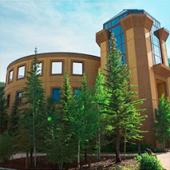CONFERENCE COVERAGE SERIES
Keystone Symposia: Common Mechanisms of Neurodegeneration/Microglia in the Brain
Keystone, Colorado
12 – 16 June 2016

Researchers who packed the lecture halls for “Common Mechanisms of Neurodegeneration” and “Microglia in the Brain,” joint Keystone Symposia held June 12-16 in Keystone, Colorado, saw old dogmas fall and new ideas and methodologies emerge. Debates ran the gamut from the biophysical nature of toxic proteins to the characterization of microglia in health and disease.
Keystone Meeting on Microglia/Neurodegeneration: Here’s the Buzz
A dynamic joint meeting dispels some old tenets while charting new avenues for research, such as microglia from iPSCs.
Induced Microglia Make Debut at Keystone Symposium
Three research groups turn induced pluripotent stem cells into what look like microglia.
The THIK and Thin of Microglial Surveillance
At Keystone, researchers report the discovery of ion channels that shed light on the machinations of the brain’s microglia.
When a Microglia Is No Longer a Microglia
Researchers are discovering that microglia not only respond dramatically to their environment, but they also can quickly lose their identity.
Unbiased Screen Fingers TREM2 Ligands That Promote Aβ Uptake
At Keystone, researchers also linked the receptor to microglial homeostasis and migration, and resolved lingering questions about TREM2’s role in plaque clearance.
